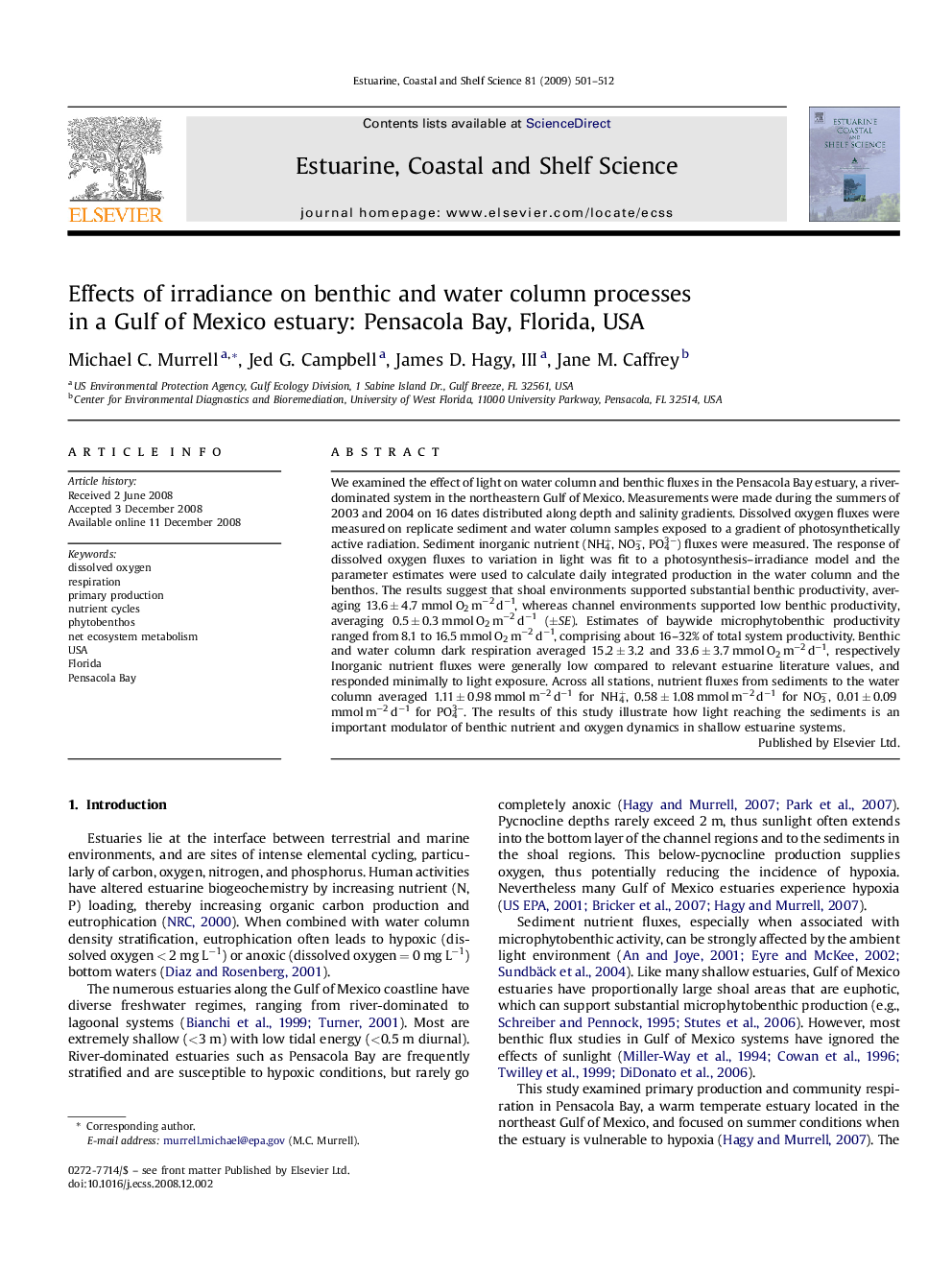| Article ID | Journal | Published Year | Pages | File Type |
|---|---|---|---|---|
| 4541357 | Estuarine, Coastal and Shelf Science | 2009 | 12 Pages |
We examined the effect of light on water column and benthic fluxes in the Pensacola Bay estuary, a river-dominated system in the northeastern Gulf of Mexico. Measurements were made during the summers of 2003 and 2004 on 16 dates distributed along depth and salinity gradients. Dissolved oxygen fluxes were measured on replicate sediment and water column samples exposed to a gradient of photosynthetically active radiation. Sediment inorganic nutrient (NH4+, NO3−, PO43−) fluxes were measured. The response of dissolved oxygen fluxes to variation in light was fit to a photosynthesis–irradiance model and the parameter estimates were used to calculate daily integrated production in the water column and the benthos. The results suggest that shoal environments supported substantial benthic productivity, averaging 13.6 ± 4.7 mmol O2 m−2 d−1, whereas channel environments supported low benthic productivity, averaging 0.5 ± 0.3 mmol O2 m−2 d−1 (±SE). Estimates of baywide microphytobenthic productivity ranged from 8.1 to 16.5 mmol O2 m−2 d−1, comprising about 16–32% of total system productivity. Benthic and water column dark respiration averaged 15.2 ± 3.2 and 33.6 ± 3.7 mmol O2 m−2 d−1, respectively Inorganic nutrient fluxes were generally low compared to relevant estuarine literature values, and responded minimally to light exposure. Across all stations, nutrient fluxes from sediments to the water column averaged 1.11 ± 0.98 mmol m−2 d−1 for NH4+, 0.58 ± 1.08 mmol m−2 d−1 for NO3−, 0.01 ± 0.09 mmol m−2 d−1 for PO43−. The results of this study illustrate how light reaching the sediments is an important modulator of benthic nutrient and oxygen dynamics in shallow estuarine systems.
